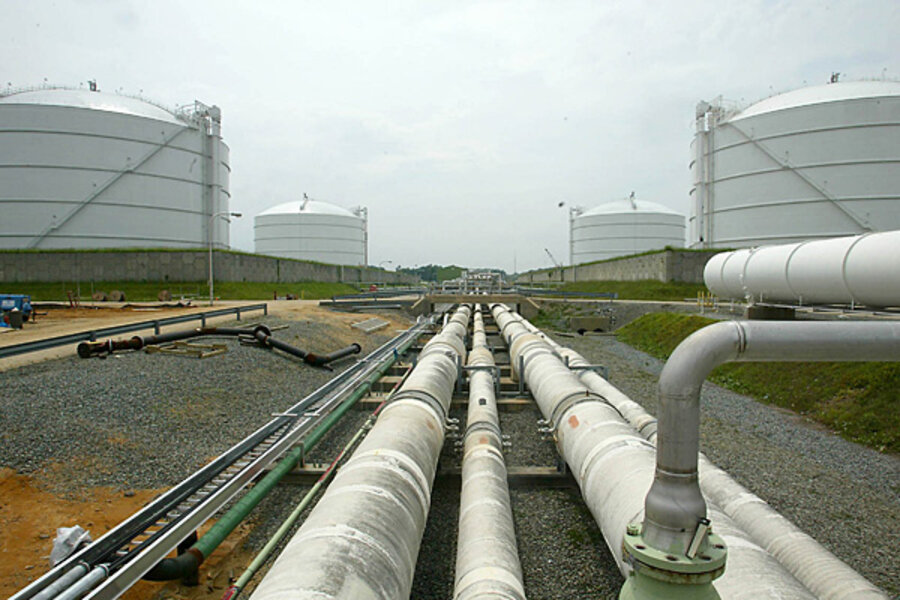The race against time for liquefied natural gas
Loading...
MIT physicist Ernest Moniz became the new energy secretary this week after sailing through the nomination process relatively unscathed. His appointment comes at a time when U.S. energy production is creating ripple effects across the globe, threatening the position of gas leader Russia and oil giant Saudi Arabia alike. Despite substantial gains in U.S. oil and natural gas production, there are restrictions in place on how much of those reserves can reach foreign markets. Last week, the Energy Department gave the green light to a new project to ship liquefied natural gas overseas. In what's already sparking a furor in the industry, Moniz took a wait-and-see approach to more LNG exports. Given testimony by some observers, however, the LNG race is going to be a race against time.
A study commissioned last year by the U.S. Energy Department found, regardless of the market scenario, exporting LNG would lead to economic gain. In what's becoming a rare instance of bipartisan support, Senate leaders this week said they wanted to ensure the right policies were in place for more exports of LNG.
"The vast majority of independent analyses conducted over the past year have found that exports overwhelmingly benefitthe economy," ranking member Sen. Lisa Murkowski, R-Alaska, said. (Related article: US Energy Infrastructure Fails to Keep Pace with Boom)
"Done right, there ought to be a way to get the trade benefits to exporters and trading partners while maintaining the domestic, economic and energy security benefits to our country," committee chairman Sen. Ron Wyden, D-Ore., said.
The U.S. Energy Department predicts domestic natural gas production should reach 70.1 billion cubic feet per day by next year. That puts the United States in the same ballpark as major gas producing countries like Qatar and Russia, which actually trailed the United States in 2009 and 2010. That led the American Petroleum Institute to say it's "abundantly clear" that exporting more U.S. natural gas would have widespread benefits.
Moniz said at an energy forum this week he'd "review what's out there" before making any decisions on the dozens of applications for LNG submitted to energy regulators. Experts who testified before the Senate committee suggested existing polices might actually conflict with one another. Moniz said he wants to ensure any future decisions on U.S. natural gas are conducted with the best data available.
Critics of LNG exports say it will lead to more shale exploration in the United States. Apart from concerns about groundwater contamination, Energy Policy Forum Director Deborah Rogers said shale gas might not have a long-term future. She testified that energy companies that rely heavily on shale natural gas are in decline while the rate at which those reserves become depleted is alarming. (Related article: LNG Exports: Obama Sides with the Oil & Gas Industry)
"It would seem absurd to expect significant growth in production, which will be needed to meet contractual obligations of exportation and the burgeoning energy demands of foreign economies," she said.
A report last week from the Ohio Department of Natural Resources found oil and natural gas productionfrom the lucrative Utica shale play wasn't going as quickly as expected. Things might kick up, however, once the necessary infrastructure is in place. The state expects shale wells will account for 73 percent of oil production and 82 percent of natural gas production in Ohio by 2015. If Rogers is right, the window of opportunity will close fast on LNG. And even if she's wrong, America's Natural Gas Alliance said issues ranging from international market demand to the costs associated with building LNG export terminals will limit the volume of viable natural gas exports from the United States.
Original Article: http://oilprice.com/Energy/Natural-Gas/U.S.-Racing-Against-Shale-Gas-Clock.html







